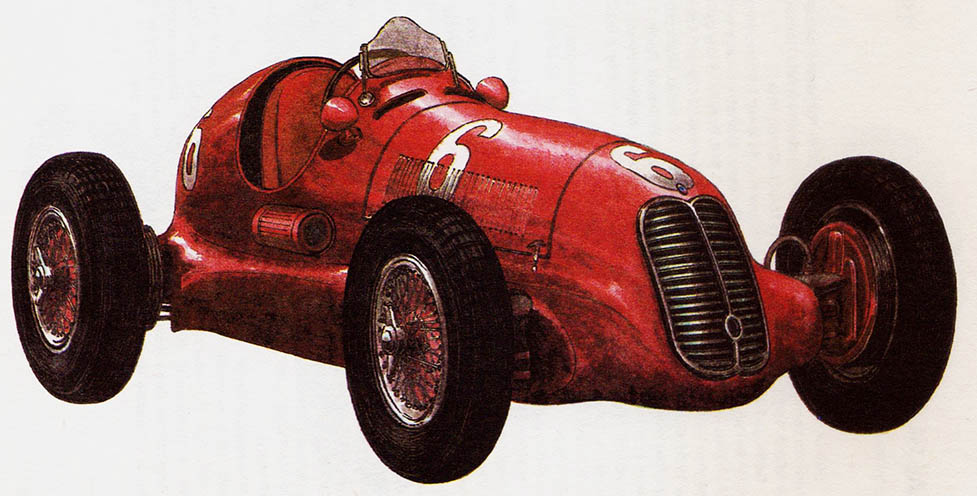MASERATI 4 CL – year 1939
Officine Alfieri Maserati, SpA, Modena, Italy.
Before World War II, large companies practically acquired a monopoly of victories, As a result, Grand Prix races for smaller producers have become virtually inaccessible. For this reason, the organizers announced new conditions for participation after twelve years, admitting cars with an engine capacity of less than 1500 cm3. As a result, construction work on cars of this class has become much livelier, later resulting in formula racing cars 1.

Officine Alfieri Maserati, SpA, Modena, Italy.
The Maserati car factory was the first company, which started its activity with the production of a vehicle with a capacity of 1,5 l. W 1939 year, the company prepared the model 4 CL with a four-cylinder engine with a cylinder diameter equal to the stroke of the piston (78 mm) and displacement 1489 cm3. This engine had 2 the upper camshafts. The use of electron castings for the crankcase and oil sump reduced the weight of the engine to 140 kg. The electron alloy is an alloy of magnesium with aluminum and zinc, with low specific weight and high strength, mainly used in aircraft structures.
The crankshaft was mounted in three slide bearings. The front end of the crankshaft drove the Roots compressor with positive pressure 130 kPa. The four-valve cylinders had non-replaceable heads. Forged I-section connecting rods were a novelty. The engine was making power 161,9 kW (220 KM) by 6600 RPM. The aerodynamic body was attached to a box frame, under the rear bridge and curved at the rear. The rigid rear axle is suspended on longitudinal leaf springs. The front wheels were independently suspended and spring loaded with torsion bars. The rear axle scabbard, pivoted in the area of the gearbox, transferred the feed forces and covered the drive shaft. A fuel tank was placed under the centrally located driver's seat. A car with a weight 630 kg reached the top speed 230 km/h, making him an equal partner for Mercedes and Alfetta in the Grand Prix race in Tripoli in 1939 year. However, in this race, despite the numerical advantage of Italian cars, Mercedes won. Maserati models 4 CL achieved success at the South African Grand Prix, where Luigi Villoresi won with average speed 160,4 km/h. His Maserati teammates took the next places – Franco Corteso the Massacurati. After the war, the car 4 CL, led by Villoresi, he won the French Grand Prix in Nice.